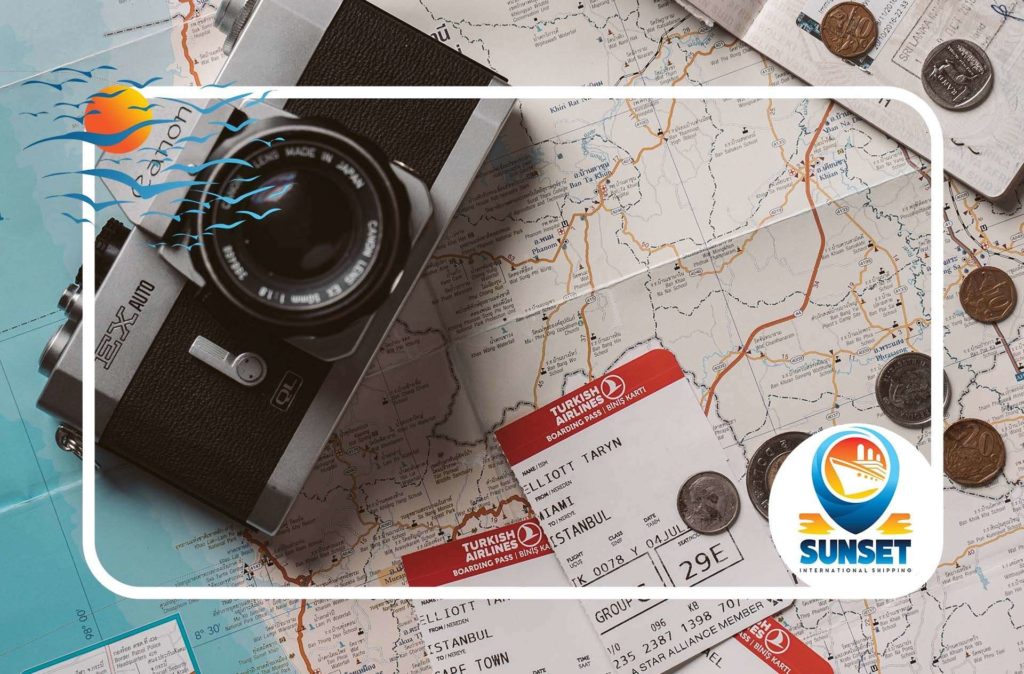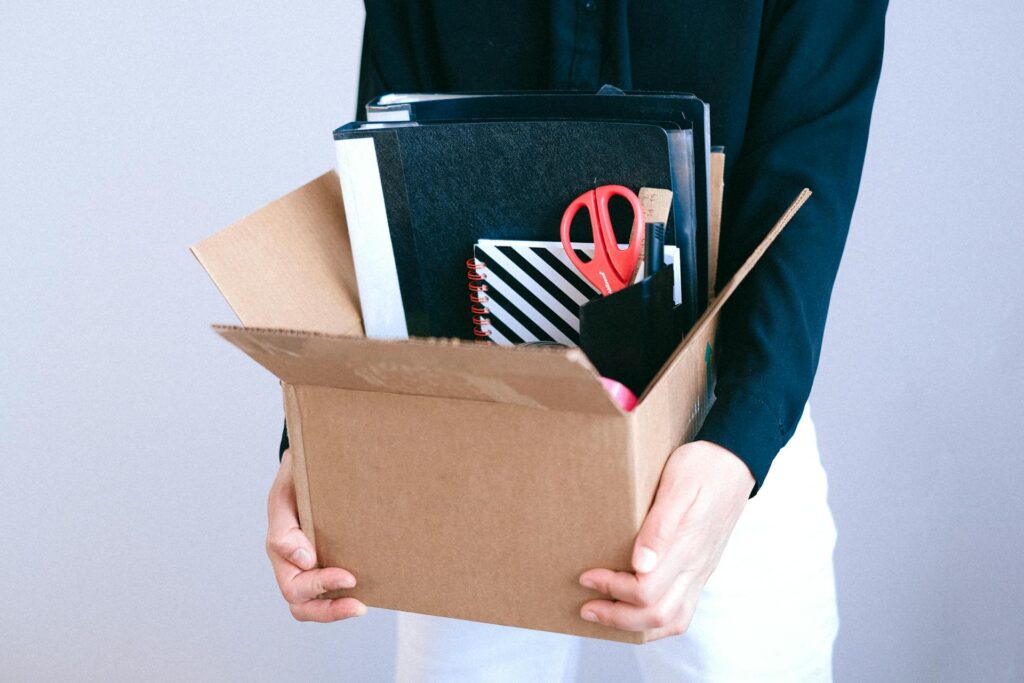Starting a new life in a foreign land can be an exciting experience, and creating a packing schedule for moving abroad is a key part of the process. We can help you navigate through the complexities of the relocation. We focus on relocation timeline organization, ensuring you are well-prepared. When you learn practical steps and strategies to efficiently pack and organize, you can turn what can be an overwhelming task into a smooth experience.


Do you want to know how to create a packing timeline for moving? It’s simple. The best approach is to start early, ideally six to eight weeks before the scheduled relocation day. Begin by categorizing items based on usage frequency and necessity, focusing first on non-essential items and gradually progress to more frequently used items as it approaches. It’s important to allocate specific weeks for different parts of the home, such as starting with storage areas and spare rooms and moving towards the kitchen and bedrooms in the final weeks. Incorporate buffer time for unexpected delays and set weekly goals to monitor progress.
How to Assess the Relocation Timeline
Are you one of the Americans eager to leave the state? Well, there are many people interested in living overseas. In 2022, according to a Gallup survey, approximately 15% of American respondents expressed a desire to permanently relocate outside of the United States. If you desire the same, our guide can help you.
When planning the move, it’s crucial to assess the relocation timeline carefully. Begin by determining the moving timeline based on the move-out date, and then work backward to create a personalized moving-packing plan. This approach allows one to set realistic goals and deadlines for each phase of packing, ensuring that every item on the moving-out list is accounted for.
Build some buffer time into the schedule to accommodate unexpected delays or changes, which can often occur. This flexibility in the timeline helps to avoid last-minute relocation chaos, making the transition smoother. Remember, the key to a successful move is not just about packing belongings but also about organizing them in a way that aligns with your specific needs.
Begin the Process – Early Stages of Packing
Initiating the packing process several weeks before the move is essential to pack efficiently and minimize relocation stress. The early stages should focus on sorting and categorizing all belongings.
Start by creating a moving checklist, outlining all the items you need to pack and the materials required.
Choose practical and secure packaging methods, keeping in mind the nature of each item. It’s advisable to begin with non-essential items and those used infrequently. Labeling boxes clearly by room and content will streamline the unpacking process. Early preparation not only ensures a smoother packaging experience but also gives you ample time to address any unexpected challenges.
Learn Strategies for Decluttering and Downsizing Belongings
Before you dive into packaging for move overseas, decluttering and downsizing all belongings is a critical step. This not only makes the move more manageable but also reduces extra costs and helps you start fresh in the new home with only the essentials. Here are some decluttering strategies:
- Categorize items – Separate the belongings into categories like ‘keep,’ ‘donate,’ ‘sell,’ and ‘discard.’
- Evaluate necessity – Ask yourself if each item is essential for a new life abroad. If it hasn’t been used in a year, it might be time to let it go.
- Sell or donate – Consider selling items of value or donating items in good condition to reduce the load. Places to turn to are Goodwill and The Salvation Army.
- Digitize documents and photos – To save space, digitize important documents and photos.
- Use a one-in, one-out rule – For every new item you keep, choose one to discard or donate.
Here’s Our Weekly Packing Schedule for Moving
Do you want to avoid packing procrastination? Then, the ideal way to go about this task is to have a well-thought-out packaging timeline. It’s essential to stick to it; otherwise, it won’t bring in any benefits. Here’s the best breakdown of the tasks:
- Week 1 – Begin by categorizing items based on their usage and necessity. This is the time to sort through belongings and decide what to keep, donate, or sell.
- Week 2 – Start packing items that are not used daily. Seasonal clothing, extra bedding, and lesser-used kitchenware are good starting points. Remember to label each container with its contents and intended room in the new residence.
- Week 3 – Focus on packing decorative items, books, and other non-essentials. It’s also a good time to start using up perishable food items to lighten the load.
- Week 4 – Pack most of the clothes, leaving out only what you’ll need for the next couple of weeks. Also, pack up the majority of the kitchen, apart from essentials.
- Week 5 – Now is the time to pack the remaining items in the living spaces. Label boxes clearly with details and handling instructions.
- Week 6 – In the final week, pack the essentials kit with items you’ll need immediately upon arrival at the new place, such as toiletries, a few clothes, and basic kitchen items.
Time-Saving Packing Tips for Maintaining Organization
Start by categorizing belongings and labeling each container with a detailed description, an approach that becomes especially critical when moving internationally. Implement color coding, using different colored tape or stickers for each room, to facilitate quick identification and placement of boxes upon arrival.
Maintaining a detailed inventory list of the contents in each box is invaluable, not only for the organization but also for addressing any customs or insurance queries that might arise during an international move.
Also, preparing a ‘Essentials’ box with essentials like toiletries and basic kitchenware can be a lifesaver, particularly after a long journey. Another practical tip is to use suitcases for heavier items like books, making them more manageable to transport.


What Are Some Special Considerations for Large or Fragile Items?
For large, bulky items like furniture, disassembly can be a practical approach, allowing for easier and safer handling. Utilizing the right packaging materials, such as bubble wrap, packing peanuts, and sturdy boxes, is crucial, especially for delicate items like glassware or electronics.
It’s important to fill any voids in the boxes to prevent movement and clearly label boxes containing fragile items to alert handlers. Securing loose parts with padding and wrapping individual pieces separately can further protect delicate items. For artwork or antiques, consider custom crating for enhanced protection.
How to Hire Professional Help for Special Items
Hiring movers is particularly recommended for heavy, bulky, or exceptionally valuable possessions that require professional handling. To find legitimate movers, start by researching and reading reviews from previous customers.
Look for an international moving company with a solid track record in handling international relocations and one that offers insurance and detailed contracts. It’s also wise to get quotes from multiple companies to compare services and prices. Ensure that the movers are licensed by checking the Better Business Bureau website. Ask about their experience with items similar to yours. Additionally, inquire about their professional packing services, as well as their policies for handling any potential damages.
How Should the Preparation for the Last Week Look?
In the final week of the household moving schedule, attention to detail is crucial to ensure nothing is overlooked. This is the time to focus on those things people often forget to do or pack. Check hidden places like laundry rooms, attics, and medicine cabinets. Confirm you have packed chargers, spare keys, and important documents.
A great relocation tip is to set aside cleaning supplies for final tidying up. Double-check that all service cancellations (like utilities and subscriptions) are scheduled. This period is also ideal for confirming details with the movers, ensuring everything is aligned for the big day.
Last-Minute Checks and Preparations for Moving Day
On the eve of moving day, conduct a final sweep of home. Ensure that nothing is left behind, especially in commonly overlooked areas like storage closets for garages. Verify that all personal items, especially those needed immediately upon arrival, are packed and labeled correctly.
Contact the overseas shipping company to confirm timings and final arrangements for moving abroad. This includes reconfirming the delivery address, contact details, and any special instructions. Check the essentials box to ensure it contains everything required. Additionally, prepare a small bag with travel essentials if you’re flying to a new destination. Make sure you have all necessary travel documents, like passports and visas, easily accessible.


What Should the Schedule Be On Moving Day?
Begin by doing a final walkthrough of the home, ensuring that all items are accounted for and ready for transport. It’s advisable to have a designated ‘last out’ area for items that will be packed last, such as cleaning supplies or essential personal items. Coordinate with the movers upon their arrival, confirming that they have the correct inventory list.
While the movers load the truck, keep the essentials box and important documents with you. Once loading is complete, do one final check of the house to confirm that nothing has been overlooked. If possible, leave a bit of extra time in the schedule for any unforeseen delays or last-minute adjustments.
What Should the Unpacking Schedule Look Like?
After arriving at the destination, the unpacking schedule should be methodical. Ideally, start with the essentials box to have immediate access to necessary items. Coordinate with the overseas moving company for the delivery of all belongings and plan to unpack room by room.
Begin with the kitchen and bedrooms, as these are essential for daily living. Set realistic goals for each day to avoid feeling overwhelmed. Labeling boxes during packaging pays off now, as it makes locating items easier.
How to Settle Into a New Home
Settling into a new home, especially as an expat, involves more than just unpacking boxes. It’s about creating a comfortable living space and integrating into the new environment. Start by setting up the home in a way that makes you feel comfortable and reflects your personal style. Then, focus on building a routine to establish a sense of normalcy.
Explore the neighborhood and familiarize yourself with local amenities and services. Connecting with expat communities can be invaluable for social support and practical advice. They can provide insights into local customs and language and essential tips for navigating new surroundings.


Have the Best Team Pack Your Whole Life and Move You Across the World
Organizing the relocation methodically, from decluttering and categorizing items to preparing an essentials box, ensures a smooth transition. Working with a professional team like Sunset International Shipping company can provide peace of mind and efficiency. We bring expertise in handling and securing all belongings, relieving you of the stress and physical strain of relocating. A systematic approach to packing and unpacking not only saves time but also helps in adapting quickly to a new environment.
For a seamless and worry-free relocation experience, it’s essential to have experts by your side.
Contact us at Sunset International Shipping, and prepare for our moving services by sea or air.
Initiating the organization of belongings for a relocation should begin at least six to eight weeks prior. This time frame allows for thorough sorting, decluttering, and arranging of items, ensuring a less rushed and more efficient process.
For efficient identification, use clear and descriptive labels on each container. Employing color-coding by room and listing contents can greatly aid in the quick location and arrangement of items in the new residence.
In a compact space, focus on maximizing the use of space in containers. Utilize clothing and linens as padding for other items. Segregate belongings by room and importance, starting with non-essential items, to keep the process manageable.
Items not desired for the new location should be sorted and either sold, donated, or recycled. Hosting a garage sale or using online marketplaces can be effective for selling. Donating to local charities is a great way to give items a new life.
Items of high value or sentimental worth require special attention. Use high-quality materials for cushioning and consider custom solutions for particularly delicate items. Keep these items with you during the transition, if possible.
Begin by arranging essentials and frequently used items. Follow the system set during the organization phase, using the labels and inventory list. Take it one room at a time, starting with areas like the bedroom and kitchen.
Original packaging is ideal for electronics. If unavailable, use sturdy boxes and ample bubble wrap or anti-static packing materials. Label cables and take photos of setups for easier reassembly. Keep these items in a climate-controlled environment if possible.












